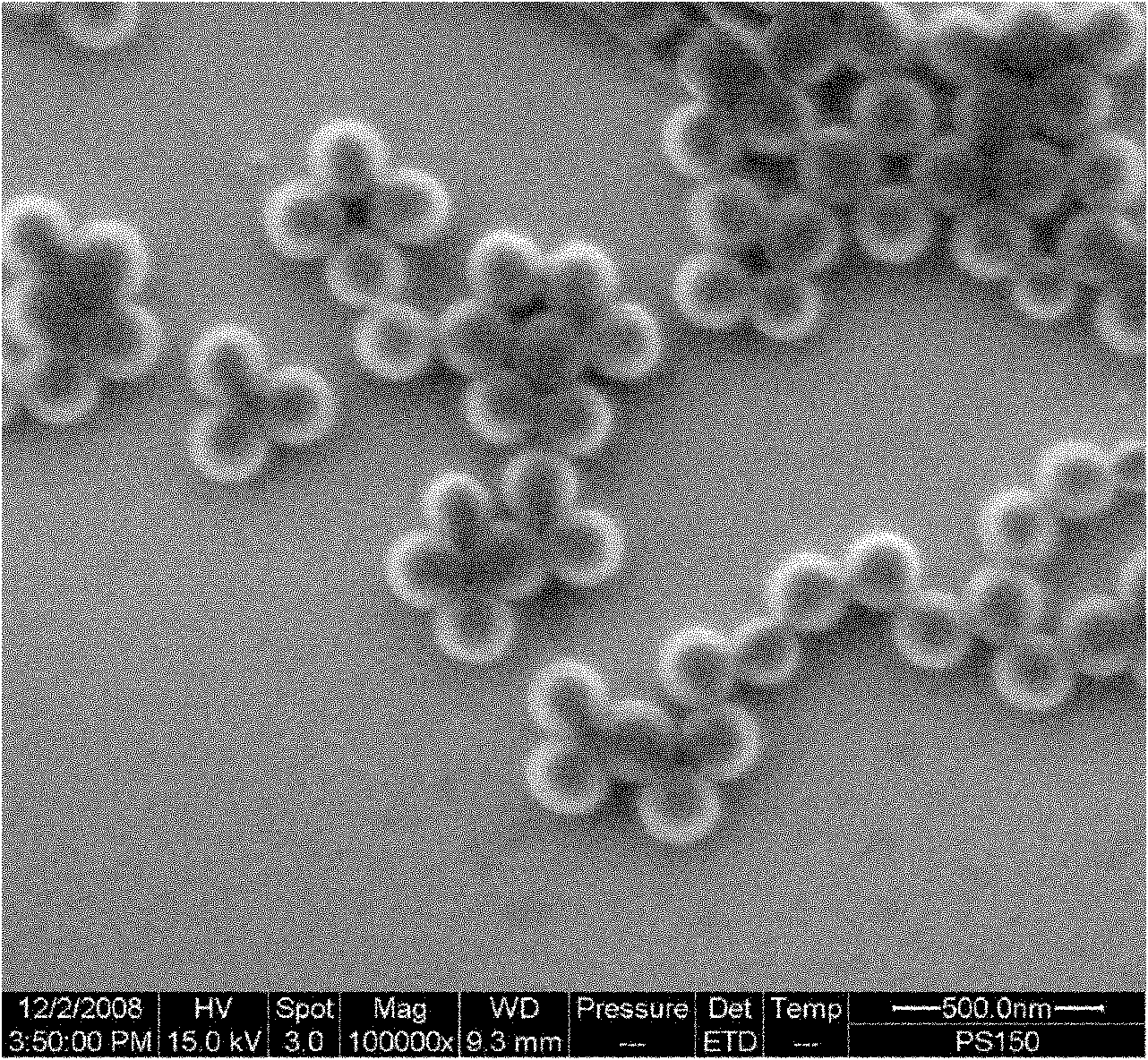In-situ combination abrasive particle copper polishing composition
A polishing composition and composition technology, applied in the field of in-situ combined abrasive copper polishing composition and chemical mechanical polishing composition, can solve the problems of soft copper surface scratches, high hardness of inorganic particles, and decreased polishing rate. Achieve the effect of reducing surface scratches, reducing scratches, and high cost performance
- Summary
- Abstract
- Description
- Claims
- Application Information
AI Technical Summary
Problems solved by technology
Method used
Image
Examples
Embodiment 1
[0026] Prepare 700g of polishing liquid: take 7g of aminoacetic acid, add it into deionized water under stirring, add 0.07g of benzotriazole, 0.35g of maleic acid, 0.35g of sodium sulfate of fatty alcohol polyoxyethylene ether, and 0.14g of peroxal, Stir 1.4g of sodium fluoride until clarification, then add 14g of silica sol (30wt% silicon dioxide content, average particle size of 50nm) and 14g of hydrogen peroxide and stir until uniform, weigh to 700g with deionized water, adjust the polishing with phosphoric acid The pH value of the solution is 4.2. With the IC 1000-XY / SUBA IV20 type composite polishing pad of Rodel Company, through the CETRCP4 polishing test machine, under the conditions of polishing pressure 4psi, polishing relative motion speed 1m / s, and polishing liquid flow rate 70mL / min, the polishing test was carried out. Measure the change of wafer quality before and after polishing, and then consider the density and area of the wafer to obtain the polishing rate o...
Embodiment 2
[0028] Preparation of 700g polishing liquid: take 7g glutamic acid, add deionized water under stirring, add 0.07g methyl benzotriazole, 0.35g diethyl maleate, 0.35g fatty alcohol polyoxyethylene ether sodium sulfate, 0.14g of Bioxad, 1.4g of sodium fluoride were stirred until clarified, then 4.2g of polystyrene particles (average particle size of 100nm) and 14g of urea hydrogen peroxide were added and stirred until uniform, and the weight was determined to 700g with deionized water, and Phosphoric acid adjusts the pH of the polishing solution to 4.2. Using the IC 1000-XY / SUBA IV20 type composite polishing pad of Rodel Company, through the CETR CP4 polishing test machine, under the conditions of polishing pressure 4psi, polishing relative motion speed 1m / s, and polishing liquid flow rate 70mL / min, the polishing test was carried out. By measuring the quality change of the wafer before and after polishing, and then considering the density and area of the wafer, the polishing ra...
Embodiment 3
[0030]Prepare 700g of polishing liquid: take 7g of serine, add it to deionized water under stirring, and add 0.07g of benzotriazole, 0.35g of dioctyl maleate, 0.35g of fatty alcohol polyoxyethylene ether sodium sulfate, and 0.14g of basil Obtained, 1.4g sodium fluoride was stirred until clarification, then added 4.2g polymethyl methacrylate particles (average particle diameter is 100nm) and 14g hydrogen peroxide and stirred until uniform, fixed weight to 700g with deionized water, adjusted with phosphoric acid The pH of the polishing solution is 4.2. With the IC 1000-XY / SUBA IV20 type composite polishing pad of Rodel Company, through the CETRCP4 polishing test machine, under the conditions of polishing pressure 4psi, polishing relative motion speed 1m / s, and polishing liquid flow rate 70mL / min, the polishing test was carried out. Measure the change of wafer quality before and after polishing, and then consider the density and area of the wafer to obtain the polishing rate of...
PUM
| Property | Measurement | Unit |
|---|---|---|
| The average particle size | aaaaa | aaaaa |
Abstract
Description
Claims
Application Information
 Login to View More
Login to View More - R&D
- Intellectual Property
- Life Sciences
- Materials
- Tech Scout
- Unparalleled Data Quality
- Higher Quality Content
- 60% Fewer Hallucinations
Browse by: Latest US Patents, China's latest patents, Technical Efficacy Thesaurus, Application Domain, Technology Topic, Popular Technical Reports.
© 2025 PatSnap. All rights reserved.Legal|Privacy policy|Modern Slavery Act Transparency Statement|Sitemap|About US| Contact US: help@patsnap.com



